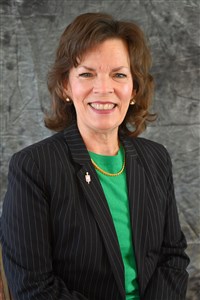The melodious singing of John Stewart, the first U.S. Methodist missionary, is credited with launching a historic friendship between the freed African-American slave and members of the Wyandotte peoples in 1819, according to Billy Friend, chief of the Wyandotte Nation.
“One little Wyandotte woman came to hear him speak, and she was so enamored with his voice that she returned with more tribal members,” said Friend, referencing the first meeting. Stewart established the Wyandotte Indian Mission, located in Upper Sandusky, Ohio. Eventually, two Wyandotte chiefs accepted the call to ministry and became ordained Methodist ministers, said Friend.
Today, the mission is one of 49 United Methodist Heritage Landmarks, the most sacred places in global United Methodism.
“John Stewart is the founder of our first Methodist mission in the United States,” said Dana Lyles, director of the U.S. Office on Multicultural Ministries at the General Board of Global Ministries. She addressed delegates from the Oklahoma Indian Missionary Conference during its annual conference June 6-8 in Preston, Oklahoma. “During the past 200 years,” she continued, “we have been in relationship with the Wyandotte Nation where we have held land in trust for the Nation. On September 21, 2019, we will return that land.”
The return  of the land coincides with Methodism’s bicentennial of mission, recognizing in 2019 the 200th anniversary of the Missionary Society of the Methodist Episcopal Church. According to the General Commission on Archives and History, the Methodist quarterly conference licensed Stewart, a “missionary pioneer,” in 1818 on lands “allotted to” the Wyandotte by the U.S. government. The following year, the Ohio Conference established an official mission to the Wyandotte. Stewart’s work and example inspired the formation of the Methodist Missionary Society in 1820, the forerunner to today’s General Board of Global Ministries.
of the land coincides with Methodism’s bicentennial of mission, recognizing in 2019 the 200th anniversary of the Missionary Society of the Methodist Episcopal Church. According to the General Commission on Archives and History, the Methodist quarterly conference licensed Stewart, a “missionary pioneer,” in 1818 on lands “allotted to” the Wyandotte by the U.S. government. The following year, the Ohio Conference established an official mission to the Wyandotte. Stewart’s work and example inspired the formation of the Methodist Missionary Society in 1820, the forerunner to today’s General Board of Global Ministries.
The land includes the original mission building, which has been restored over the years, and a cemetery, where Stewart is buried along with Wyandotte tribal members.
“For the last 10 years, I have been taking our elders and youth to the mission and teaching them about our ancestors,” said Friend. “It has been important in establishing our identity and helping us to reconnect with our ancestors who worshipped in that exact location.”
Stewart began the ministry at a rough point in the history of the Wyandotte Nation. In 1819, Chief Tarhe had passed away. The United States government had promised the tribe 148,000 acres of land in what is now Kansas City, Kansas. When the Wyandotte people, totaling 664, arrived on the banks of the Missouri River, they found the land had been given to someone else. They were left with nothing.
“We lost 200 people that first year,” said Friend. “If it wasn’t for the missionary work that John Stewart did, our people wouldn’t have survived. He brought the gospel and gave us hope for the future.”
The Rev. David Wilson, Oklahoma Indian Missionary Conference superintendent, invited Friend and Lyles to share the progress of the land exchange with the annual conference.
“Although the Wyandotte Nation has been in Oklahoma since their removal, many do not know their history and connection with the Methodist Church,” said Wilson. “Their history is our history, and it is great to make a connection with the Nation once again.”
Members of the OIMC plan to travel to the celebration event In Ohio this fall to witness the moment the land is deeded back to the Wyandotte Nation.
The tribe, located in Wyandotte, Oklahoma, has 6,475 tribal citizens.


